Do Some German Shepherds Have Floppy Ears? Things To Know
Do some German Shepherds have floppy ears?
Yes, absolutely – German Shepherds have a majestic appearance with ears that stand up naturally in most cases.
However, you do see GSDs with floppy ears sometimes, too.
Genetics will determine whether or not these dogs will have ears that stand up, but there can be other reasons for Shepherd’s ears not standing up.
What’s with floppy German Shepherd ears?
Although floppy ears are not as common on adult dogs, they can occur in both adults and puppies.
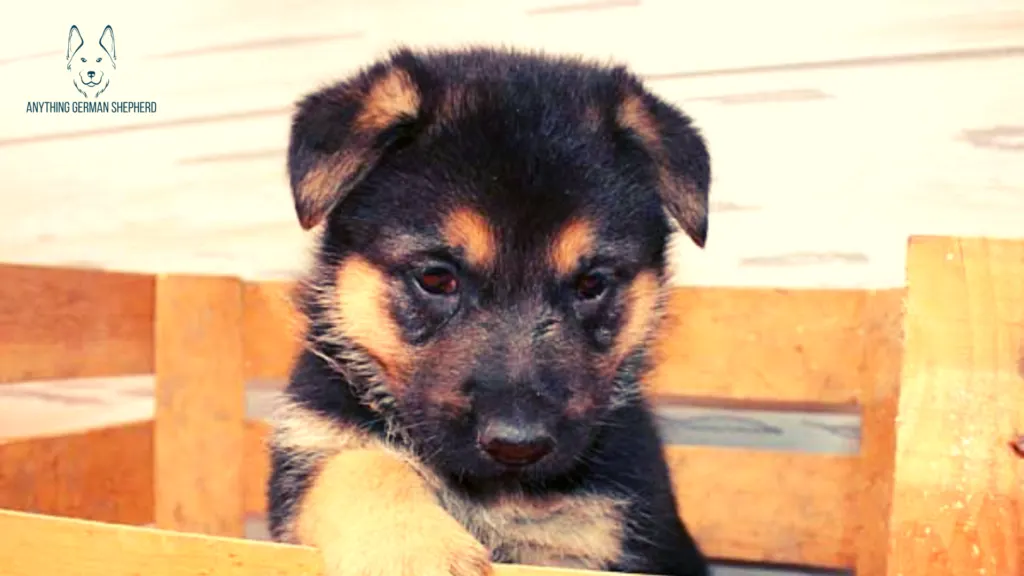
Do German Shepherds Have Cropped Ears?
A common misconception that many people have is that German Shepherds have cropped ears that account for their erect posture.
It often surprises some people to learn that the AKC standard calls for naturally erect, not cropped ears.
According to the German Shepherd Club of America, the breed’s appearance is best designed to exemplify its work as a flock guardian.
What Are German Shepherds’ Ears Like at Birth?
GSD puppies are born with floppy ears set against the side of the head. As puppies mature, their ears usually start to stand up naturally.
However, for various reasons, some dogs have ears that stay floppy.
According to Train Your GSD, many Shepherd owners expect the ears to stand up earlier than is usual.
When Do German Shepherds’ Ears Start to Stand Up?
German Shepherd puppies’ ears usually become erect between four and seven months old.
You can reasonably expect erect ears by around eight months old.
Some puppies’ ears might start to go up before four months as well.
Don’t be surprised if your puppy has erect ears that flop when teething starts.
This is because calcium that would generally nourish the ears is reallocated to the teeth during this time.
You can expect the ears to become erect after the teething stops, around 20 weeks.
After a puppy is no longer teething, they will start retaining enough cartilage in the ears to help hold them up.
GSDs ears are heavier than they appear, and the cartilage must be sufficient to help keep that position.
A sign of ears likely to stay erect are ears that become pointy once they start to stand.
It’s reasonable to see some movement up and down after this point until they become permanently straight.
If your puppy reaches four or five months without any sign of the ears standing up, you might need to give them some help.
When the ears are not erect by around seven or eight months, they will more than likely retain a floppy position.
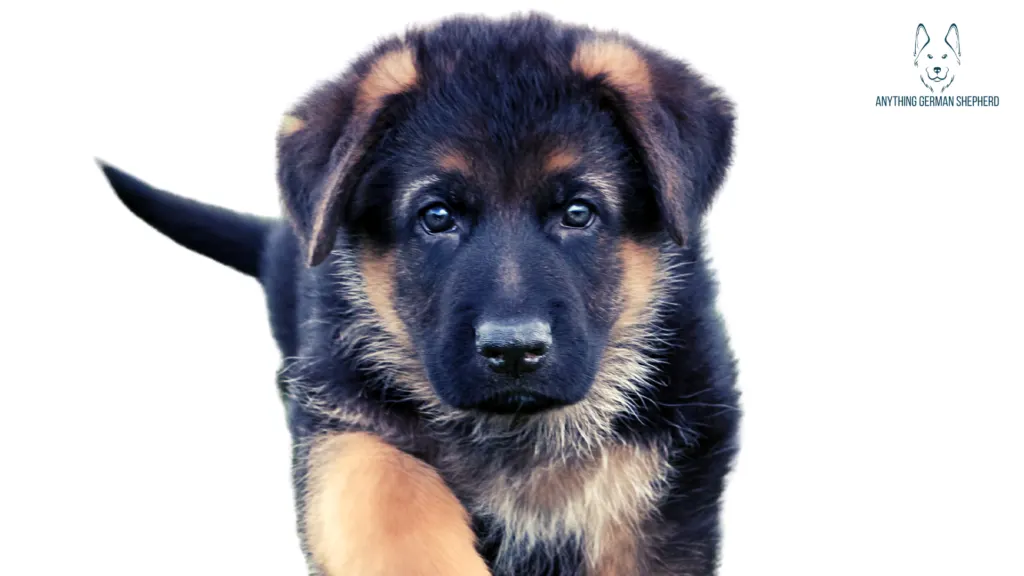
Can You Tell Ahead of Time if a GSDs Ears Will Stand?
There really isn’t any surefire way to know definitively if your German Shepherd’s ears will stand erect or remain floppy until they are at least a few months old.
It is not something that is going to happen overnight.
If you notice that your pup can prick their ears up or even just the tips of their ears by the time they are four to five months old, the chances are that the ears are developing normally and should become pointed without any intervention.
However, if you don’t notice your pup’s ears pricking up at all by the time they are eight months old, then there is a higher likelihood that it won’t happen.
Should You Massage a German Shepherd’s Ears?
As a dog owner, you want to do everything you can to prevent any trauma from happening to your pup’s ears.
The best thing to do is to keep your hands off their ears and avoid bending, rubbing, or folding their ears.
Why Does My German Shepherd Shake Their Head?
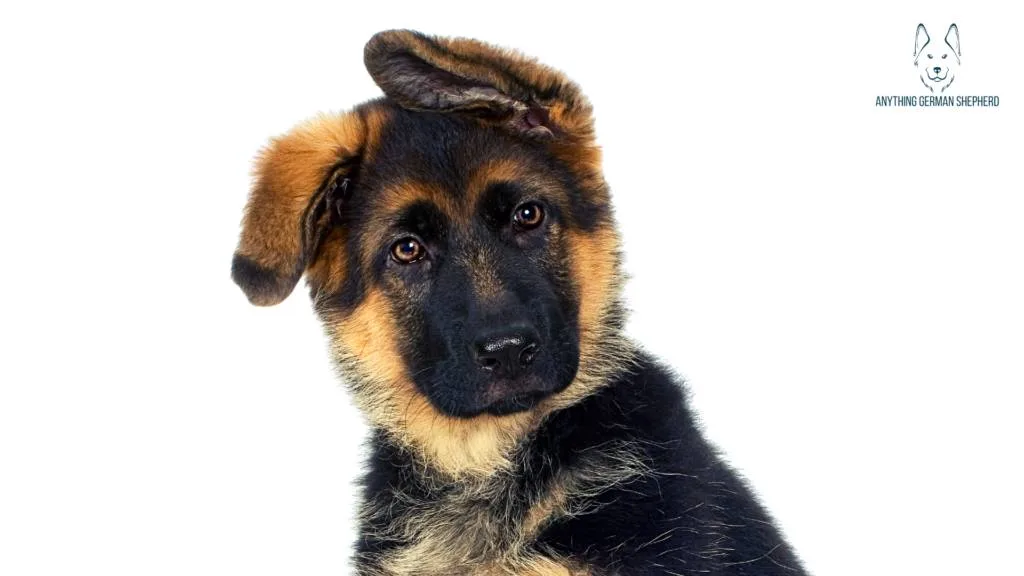
If you notice that your German Shepherd is shaking their head a lot or scratching at their ears, it may be their attempt to relieve some kind of minor itchiness or irritation.
However, if you notice that the head-shaking persists, then you should be concerned, especially as your pup grows.
Any trauma to their ears before they reach four to five months of age can affect the cartilage and cause the ears to remain floppy rather than erect.
Here are some conditions that may cause injury to your dog’s ears.
- Aural Haematoma: this is a blood blister found on the outer skin of the ear and can appear swollen. This condition can cause your dog’s ears to droop as they continue swelling. This condition is often the result of trauma due to vigorous ear shaking or a dog fight.
- Ear Polyps: These are growths that occur inside the dog’s ear canal. They are not typically cancerous and may only irritate your dog’s ears. However, if they are more serious, they will need to be removed surgically, and this can sometimes include the removal of part or all of the ear canal.
- Ear Mites: this parasite can irritate your dog’s ears and need to be removed. If not, your pup will continue shaking their head and scratching, which can cause further injury and trauma to their ears.
- Skin Allergies: The head shaking and scratching may also be due to an allergy. For this, you may have to use antibiotics, antihistamines, or put your pup on a low allergy diet to treat their ears.
For more information on avoiding dog ear infections and what to look for regarding causes and treatments, visit AKC.org.
You should also always discuss any concerns about your German Shepherd’s ears with your veterinarian for proper diagnosis, treatment, and prevention tips to protect your pup’s ears.
What Kind of Ears Will My German Shepherd Have?
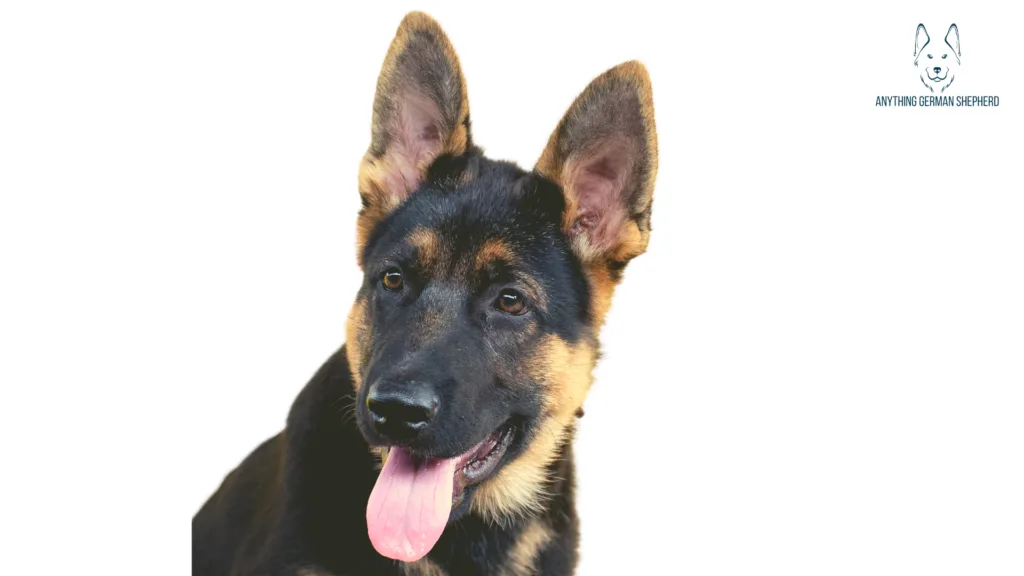
One of the more recognizable features of the German Shepherd dog breed is their large, erect ears and stoic expression.
However, a lesser-known fact is that a German Shepherd puppy is born with floppy ears.
So, how do you know what kind of ears your German Shepherd will have?
A German Shepherd’s ears should typically be of medium size, upright, and aligned. The ears should also be pointed.
However, it also isn’t uncommon for an adult German Shepherd to have floppy or hanging ears.
If you got your German Shepherd from a reputable dog breeder, you could expect that their ears will stand erect after they are done teething.
However, if you acquired your puppy from a puppy mill or there were less than desirable breeding practices or health problems, then your adult dog may end up with droopy ears.
German Shepherd Ears Chart
Although there is an official breed standard, in reality, German Shepherds have different types of ears, from ears that are set too high or too low to ears that are too large, asymmetrical, or too small.
Some dogs even have ears pointing outwards or inwards or tilting one way.
Overall, as you can see in our German Shepherd Ears Chart, there are at least 12 different types of German Shepherd ear shapes.
How Can I Help My German Shepherd Have More Erect Ears?
One of the most important things you can do is make sure everyone leaves your Shepherd’s ears alone.
Fondling, pulling, bending, or folding your puppy’s ears can affect their carriage. Even other dogs’ rough play can affect the ears.
Massage the Ears
Massaging the ears’ bases without handling the ears themselves may prove helpful.
Blood flow into the cartilage will likely increase when you do this, helping the ears keep their shape.
Proper Ear Cleaning
Make sure you learn how to clean the puppy’s ears right. Proper cleaning will help prevent infections that can be painful and costly to treat.
When cleaning your German Shepherd’s ears, always check for dirt and wax buildup.
Pull your GSD’s ear gently so you can reveal the ear canal to get a better look.
Make sure you have a towel handy as you drop the ear cleaner into their ear.
The towel can be used to clean up any mess as well as massage the ear cleaner solution in and around the ears.
You can then use a cotton ball to remove any dirt or excess liquid.
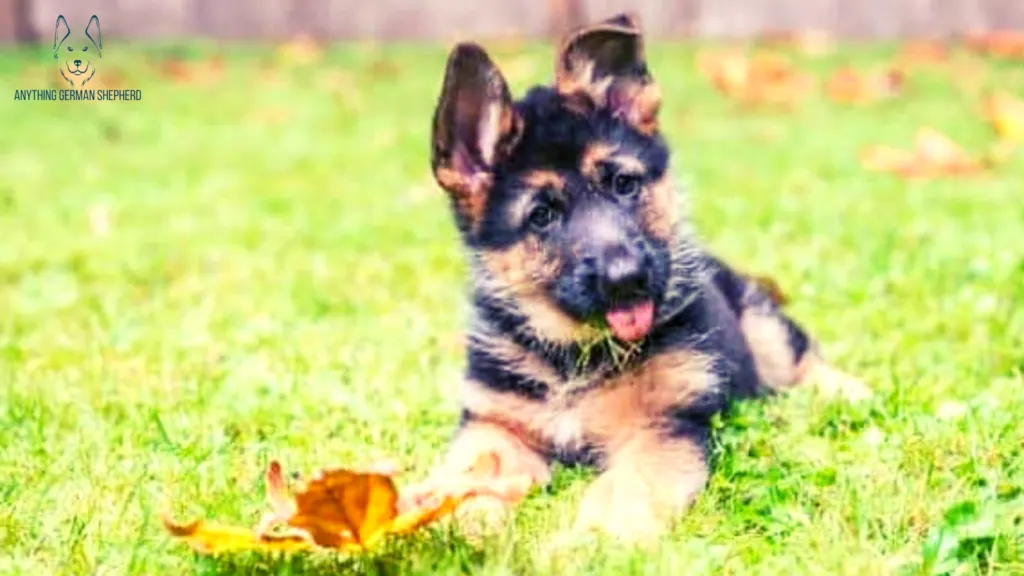
Chew Toys
Sturdy chew toys will not only help keep your puppy busy but can also play a role in exercising the muscles supporting both the ears and jaws.
Bully sticks, antlers, Kong’s, and Nylabones are all excellent choices for this purpose.
Chewing helps with teething while also exercising their jaw and neck, and head muscles.
Quality Diet
The food that you feed your puppy should have high-quality, nutritious ingredients.
Foods free from both wheat and corn are some of the best choices.
You should also discuss supplementation with your veterinarian.
Glucosamine, for example, helps to lubricate joints and supports healthy cartilage.
Positive Stimulation
Using positive triggers can be an excellent way to stimulate your puppy’s ears while they are still teething.
For example, hearing certain noises that attract their attention or hearing their name can make them prick up their ears.
Take advantage of this situation by praising them and providing a treat when they prick up their ears in response to this type of stimulus.
They will associate pricking their ears up with getting a reward.
Regularly Check for Parasites
You also want to regularly check your dog out for parasites and ear mites.
A parasite can negatively affect your dog’s development and can also affect his ears.
In addition, tapeworms and roundworms take away the essential nutrients your German Shepherd pup needs, which can ultimately cause poor health and other deficiencies.
An ear mite infection can also cause your dog to itch, which causes them to shake their head excessively.
It also causes them to scratch at their ears with their paws, which can damage the cartilage and cause redness and inflammation to your German Shepherd’s ears.
Ear Protection
It is also a good idea to do what you can as a dog owner to protect your German Shepherd’s ears from experiencing any trauma.
Cartilage is extremely fragile and is prone to damage.
If the cartilage becomes damaged, it can prove impossible for the ears to stand erect.
To protect your dog’s ears, keep them away from rough play and avoid biting, tugging, and tumbling with other dogs during playtime.
Surgical Implants
If your German Shepherd’s ears are still floppy and not standing erect, even after following the advice offered in this article, it may be time to discuss surgical implant solutions with your veterinarian.
However, keep in mind, this is invasive and does require your dog to go under anesthesia.
They will also require pain medication following the surgery, and there will be a lengthy recovery time.
Therefore, we don’t recommend this avenue since it is more of a cosmetic procedure and will not benefit your dog’s overall health.
Discuss Options with Your Vet
You may want to consider having your vet make sure nothing is going on, like an ear infection.
Some parasites can also affect dogs’ ears, as we have already mentioned, so you might want to have a fecal test done to be sure.

What Are Some Reasons for Permanently Floppy Ears?
Some German Shepherds come from lines that carry genes that lead to floppier ears.
Unfortunately, when genetics is the cause, there is little that owners can do aside from being more conscientious about ear health, which is a more significant concern in floppy-eared dogs.
Many dogs from show lines, in particular, have larger ears that require more cartilage while the dog is growing to help support a more upright position.
In many cases, these dogs will not have ears that stay upright.
Broken Ear Cartilage
German Shepherds can also end up with permanently floppy ears as a result of broken ear cartilage.
This can happen in GSDs for a variety of reasons, including:
- Injuries
- Ear infections
- Parasites
- Allergies
- Improper breeding
- Improper ear cleaning
But thankfully, even if a German Shepherd breaks their ear cartilage, they are usually able to recover fairly quickly with a little rest.
To speed up the healing process and to strengthen your dog’s ears, you can also try:
- Taping their ears
- Massaging the ears
- Cleaning them properly
- Chew toys
- Nutrients that support cartilage growth
- Positive stimulation
When all else fails, even surgical implants are a potential solution.
However, this is something that should definitely be discussed with your veterinarian.
What About Having My Shepherd’s Ears Cropped?
Even though the breed standard does not call for cropping and posting, some owners choose this option anyway.
However, this is a lengthy, expensive process that does not always work.
According to Jenna Stregowski, unnecessary cropping can be risky for your dog.
Many vets won’t crop ears for dogs whose breed standard doesn’t call for cropping.
Are There Foods Or Supplements That Will Help My German Shepherd Puppy?
It’s a well-known fact that calcium helps contribute to healthy cartilage growth.
However, supplements intended for human usage aren’t practical for dogs and might even cause health difficulties.
Even supplemental calcium formulated for dogs might not be suitable for your puppy if unnecessary.
In addition, excess calcium tends to settle in a dog’s joints, which can cause further problems.
Some supplements and foods can help strengthen and rebuild cartilage. Glucosamine and chondroitin have this effect.
These supplements will also not harm your puppy’s future health.
Should you choose to give your dog these nutrients as a part of their food instead of a supplement, chicken feet can easily fit the bill.
Dogs produce Vitamin C naturally, making supplementing optional.
However, there are some benefits to extra Vitamin C worth considering:
- A natural type of histamine that protects your dog against allergies
- An immune system booster provides antibodies, increased anti-viral and anti-cancer protection and increased white blood cells
- Contributes to healthy joint development
Before you supplement Vitamin C, it’s a good idea to make sure your dog requires extra to avoid overdosing on them.
Signs of a Vitamin C overdose can include either constipation or diarrhea.
Vitamin D is a nutrient where additional supplementation is beneficial because dogs’ bodies do not create it naturally.
Even if your dog spends a lot of time outside, they might not necessarily get the extra amount they need.
There is usually Vitamin D added to most commercial brands of dog food.
You might, however, need to provide a supplement if your dog’s diet includes mostly home-prepared meals.
According to Dana Scott, as many as 75% of dogs could benefit from supplementing with this vitamin.
A teaspoon of cottage cheese with meals provides a dose of vitamins, phosphorus, protein, and calcium.
Another choice that contains these nutrients, plus magnesium, potassium, calcium, and protein, is yogurt.
One teaspoon to one tablespoon of yogurt with each meal provides digestive support because of its probiotics.
Plain yogurt is best because of the lack of sugar, and always avoid any products containing xylitol, which is toxic to dogs.
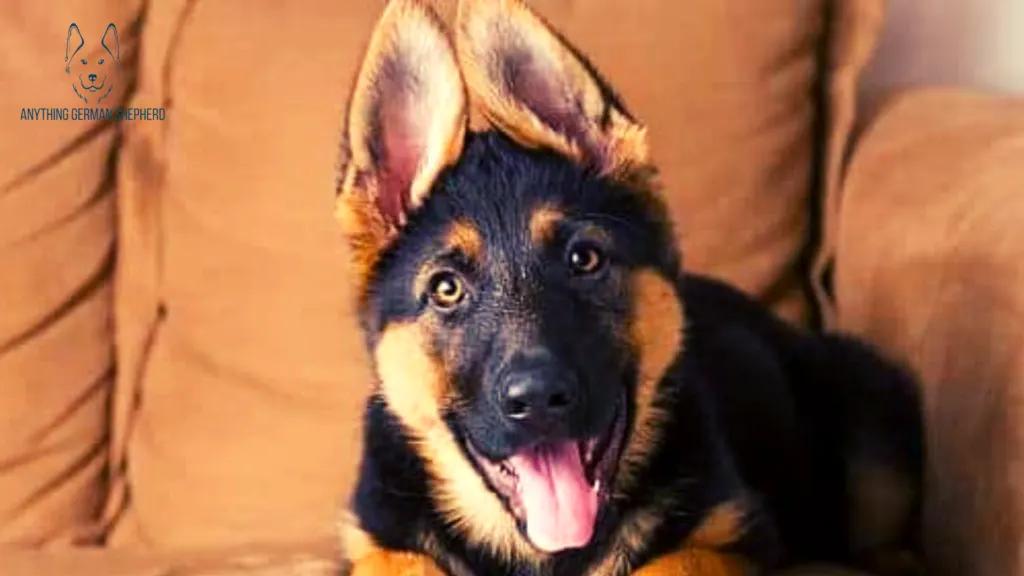
What Should I Do If My Dog’s Ears Won’t Stand at All?
Taping a puppy’s ears should never be done while a puppy is teething, as this is a significant time of development when many nutrients that otherwise go into ear cartilage end up going into other areas of the body, seeing substantial growth.
Most puppies will be done teething when they’re between four and six months old.
Try taping a puppy’s ears around six months if they haven’t stood up already.
Use one of the methods listed below and avoid duct or similar tape.
For the first method, use foam hair rollers close to the size of your puppy’s ears, with the plastic taken out.
Hold the ear up in a vertical position using the roller and a popsicle stick. You will need thin medical or masking tape for the next part.
Put the tape around each ear from the tip to the base. Make sure you finish ear taping around the tops of the popsicle sticks to finish off each ear.
A somewhat more complicated method of ear taping involves moleskin dog ear support forms. Use some skin bond adhesive to attach the ear support forms to the ears.
Make sure the form goes down to the base of the ear without going deeply into the canal.
This video, from a German Shepherd owner, details how to use moleskin ear supports.
Is it Safe to Tape a German Shepherd’s Ears?
If you follow our instructions above and use the right tape, then ear taping can prove to be a painless and safe method of helping your German Shepherd’s ear stand up.
When you tape the ears, it allows the cartilage time to form as it should while also becoming strong enough to hold the weight of your dog’s ears.
German Shepherds With Floppy Ears: Good Care is Essential, Floppy or Not
Regardless of whether your dog’s ears stand up or stay floppy, proper care is essential.
Don’t allow either children or other adults to play with your dog’s ears.
Also, supervise their play with other dogs, especially with rough players.
Protecting your dog’s ears from needless abuse, as well as regular cleaning, will help keep them in good condition, regardless of whether they’re carried down or erect.






























